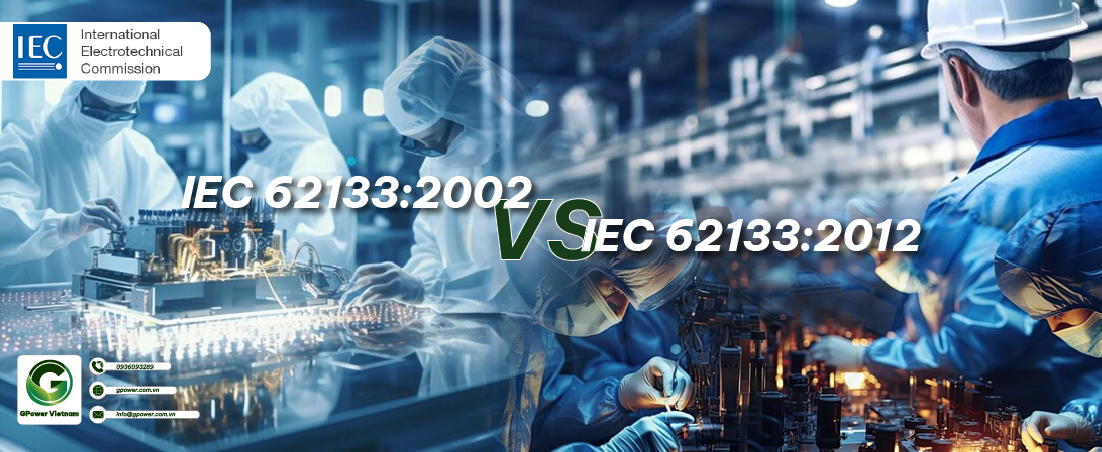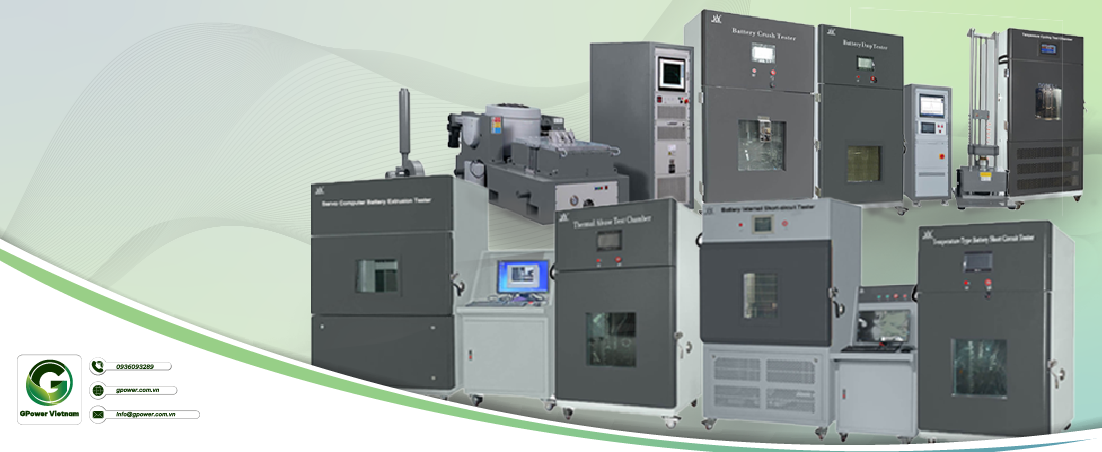Lithium ion battery has the advantages of high specific energy, high voltage, long cycle life and low self discharge. It has become one of the main power supplies for portable electronic products such as mobile communication, notebook computers and electric tools.
However, under misuse conditions (such as heating, overcharge, short circuit, vibration, extrusion, etc.), lithium-ion batteries may cause fire, explosion and even personal injury. Therefore, the safety problem of lithium ion battery has become the bottleneck of its development.
At present, many countries or testing institutions are studying new lithium battery safety technologies and formulating more scientific and perfect standards.
For example, the testing standards applicable to lithium batteries for portable equipment are: IEC62133, UL1642, JIS C8714, IFEE1625, UN38.3, etc.
This paper mainly analyzes and compares the differences between the 2002 edition and 2012 edition of the standard IEC62133 for lithium-ion batteries for portable devices from the aspects of the content arrangement of the test items, test objects, test parameters, etc.
1. Test items
The 2012 edition has some adjustments compared to the 2002 edition:
- Deleted the test items related to the protection function of single battery during vibration, mechanical shock, temperature cycling, low air pressure and high rate charging in the 2002 edition, and
- Added two new items: transportation test and forced internal short circuit test.
The transportation test in IEC62281 includes low air pressure, temperature cycle, vibration, impact, external short circuit, impact and extrusion test items.
Although the same test name exists in the test project, the actual test operation is quite different. For example, the requirements of the external short circuit test content on the line resistance value, the same sample needs to complete the continuous test during the transportation test, and the squeezing charging procedures are different.
As far as the test object is concerned, the vibration, shock and temperature cycle test items in IEC62,133:2002 standard are applicable to the test of electric cells and battery packs; However, the transport test in the 2012 standard only focuses on the test of the electric core, which also emphasizes the safety evaluation of the electric core in the transport process. For the overcharge test, the new standard only focuses on the overcharge safety of the battery pack.
2. Analysis of differences between standards

2.1. Comparison of the same test items
In addition to the same charging procedure as that of the 2002 edition, that is, charge at an ambient temperature of (20 ± 5)℃ according to the method declared by the manufacturer. The 2012 edition also stipulates new charging procedures for reasonably foreseeable abuse (external short circuit of battery cell and battery pack), heat abuse, extrusion and forced internal short circuit tests, that is, charging pretreatment (currently used for lithium batteries) is conducted at the upper limit test temperature of 45 ℃ and the lower limit test temperature of 10 ℃ with the upper limit charging voltage of 4.25V/cell and the maximum charging current specified by the manufacturer.
If the new upper limit charging voltage and upper and lower limit test temperature are adopted, certain tests shall be carried out to meet the acceptance standards of relevant tests and ensure the safety of the battery. Specific test contents: based on the structural stability of positive material, the structural stability of electrolyte and other material characteristics, it is necessary to ensure the safety of the charged battery under the new upper limit test temperature, and add 5C to the new upper limit test temperature to apply the charging conditions in 8.1.2 of IEC62133:2012, and meet the test requirements; Based on the lithium ion absorptivity of the negative electrode material and the lithium ion mobility of the electrolyte (corresponding to the temperature), it is necessary to ensure the safety of the charged battery at the new lower limit test temperature, and add – 5 ℃ to the new lower limit test temperature to apply the charging conditions of 8.1.2, and meet the corresponding test requirements.
(1) Overcharge
The overcharge test is to simulate the potential safety hazards of the battery when the charger voltage detection is wrong, the charger fails or the wrong charger is used. Generally, the overcharge test of lithium battery cell is a test item that is difficult to pass, and the requirements for 10V charging voltage are too strict. In fact, most batteries are equipped with PCB protection board and voltage limiting protection circuit, which can effectively prevent the overcharge of the battery cell. In the 2012 standard, the overcharge test of the battery cell was removed, and the overcharge test for the battery pack was designed. That is, the fully discharged battery pack shall be charged with 2.0l (IA=C Ah/1h) constant current, and the voltage shall not exceed the maximum recommended charging voltage or 5.0V/cell, which is sufficient to maintain constant current.
(2) External short circuit
The external short circuit test in IEC62133:2002 standard includes the short circuit at two temperatures of (20 ± 5) ℃ and (55 ± 5) ℃. The resistance of the external circuit shall not exceed 100 m Ω. The single battery or battery pack shall be tested for 24 hours or until the shell temperature decreases by 20% from the maximum temperature, whichever is shorter. However, great changes have taken place in the 2012 standard: first, the battery cell or battery pack adopts a new charging procedure; Secondly, the resistance value of external circuit shall be more specific, namely (80 ± 20) m Ω; Finally, separate the ambient temperature for cell and battery test, that is, the cell test is conducted at (20 ± 5) ℃, while the battery test is conducted at (55 ± 5) ℃. It can be seen that the change of battery charging mode has improved the level of lithium battery safety test. At the same time, the limit of resistance value is more strict to the test equipment.
(3) Thermal abuse
Thermal abuse refers to the simulation of improper battery use under high temperature, such as placing mobile phones in sun exposed cars, or placing mobile phones or electronic products in microwave ovens. The external heat source directly acts on the lithium battery, causing complex internal chemical reactions, such as the decomposition of SEI film, the redox reaction between electrolyte and positive and negative electrode materials, which further evolves into heat runaway. In addition, the diaphragm melts and shrinks at high temperature, leading to short circuit of positive and negative poles, which is very likely to cause fire or explosion. In the IEC62133: 2012 standard, only minor changes have been made to the heat abuse test, that is, small electric cores are kept at 130 ℃ for 10 min, and large electric cores are kept at 130 ℃ for 30 min. This is due to the increasing volume energy density and high capacity of single lithium ion battery.
(4) Crush
Crush test content in IEC62133:2012 standard: select the method that causes the most unfavorable result to apply a force of (13 ± 1) k N. Once the maximum pressure is reached, or the voltage suddenly decreases by 1/3 of the initial voltage, or 10% deformation occurs, the pressure shall be released. For square battery, only the wide side test is carried out, instead of the narrow side test. Compared with the 2002 standard, there are only minor changes, that is, the battery cell uses a new charging procedure. The squeeze test simulates a local internal short circuit. The new charging method may reduce the qualification rate of lithium battery cell safety test.
2.2. Add test items
(1) Forced internal short circuit
The forced internal short circuit test attempts to simulate the internal short circuit caused by such metal particles penetrating the diaphragm. The tests in IEC62133:2012 standard investigate internal short circuit from two positions: positive active substance. Between negative active substances; Positive aluminum foil – negative active material. In the test, the fully charged battery cell is first decomposed in an environment where the dew point is lower than – 25 ℃, then small nickel sheets are placed at the upper two positions respectively, rolled back into the battery, and placed in a sealed polyethylene bag.
The battery is placed at the upper (lower) test temperature plus (minus) 5 ℃ for (45 ± 15) min, and then under the upper and lower test temperatures respectively, a standard pressure tool is used to apply pressure at a speed of 0.1mm/s to the nickel sheet position, Until it is observed that the internal short circuit causes a voltage drop of 50 mV or the pressure meets the requirements (800 N for circular batteries and 400 N for square batteries), the pressure will be released after 30 seconds. It is required that the battery will not fire or explode in case of internal short circuit. The content of this test is the same as that in JIS 8714 standard.
In addition, the standard stipulates that this test is only applicable to France, Japan, Korea and Switzerland. Although the forced internal short circuit test can greatly reduce the unsafe factors caused by the defects in the production process, it is still controversial whether it can truly and effectively simulate the internal short circuit of normal batteries. At the same time, the strict operation required for battery disassembly and reassembly is also a challenge.
(2) Transportation test
Compared with IEC62133:2002 standard, the 2012 standard deleted several test items such as low air pressure, temperature cycle, vibration and impact, but added transportation test.
It can be found from the difference comparison analysis that except T6, which is for a single sample, T1-T5 is for the same sample to be tested in turn. The previous test may have a negative impact on the next test, resulting in failure to pass the test. In addition, there are also differences in their testing methods. Temperature cycling and vibration conditions are more stringent in terms of temperature, time and acceleration, which is easy to lead to liquid leakage, internal fracture and other phenomena of lithium battery. In a word, IEC62133:2012 standard greatly enhances the safety test requirements of lithium battery.
3. Some test chambers meet IEC 62133 standards
Through the comparative analysis between the 2002 edition and 2012 edition of the international standard IEC62133 for lithium-ion batteries for portable equipment, it is found that the 2012 edition is more specific and detailed in the safety assessment of lithium-ion batteries. It also stipulates the safety test methods of lithium ion batteries used in portable electronic equipment under normal use conditions, foreseeable misuse conditions and foreseeable fault conditions, ensuring the safety of lithium batteries during storage, use, transportation, etc.






